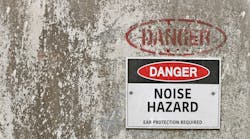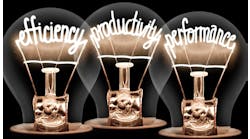Hear that? The importance of noise-reduction in the autonomous warehouse
Although they were once the subject of science-fiction stories, autonomous warehouses will soon become the norm in the shipping and logistics worlds. But even with many aspects of warehouse work being automated, there is still a need for human employees to oversee tasks and handle certain responsibilities.
These employees must be protected from hazards, including those created by excessive noise from autonomous operations.
There are proven strategies for assessing and reducing noise in autonomous warehouses populated by robots, cobots and self-driving vehicles. Managers can conduct regular noise-level measurements and offer employees free annual hearing exams. They should provide hearing-protecting equipment to staffs (earplugs, ear muffs, etc.) and routinely evaluate the effectiveness. Managers can also provide training on the risks of noise-exposure and proper methods of protection.
The benefits of taking these steps are clear—enhanced employee well-being, better retention, clearer communication on plant/warehouse floors, etc.
According to the Occupational Safety and Health Administration (OSHA), employers must implement a hearing-protection program for those working in an environment where noise exposure is at or higher than 85 decibels over a period of eight working hours. Noise levels above 85 decibels (equivalent to a blender, heavy traffic when sitting in the car, or a movie-theater’s speakers) are associated with an increased risk of hearing loss.
Warehouses are inherently noisy, whether they are staffed by humans or robots or both. In an autonomous warehouse, types of machinery like shelf-loaders, autonomous mobile robots (AMRs), and automated guided vehicles (AGVs) create plenty of loud noises that can quickly put hearing at risk.
The easiest way to evaluate noise levels in an autonomous warehouse is with a sound-measuring device, such as a sound-level meter, noise dosimeter, or octave-band analyzer. The National Institute for Occupational Safety and Health (NIOSH) also offers its own sound-level meter app for iOS devices. These tools can help you measure the exact noise level in a warehouse. However, it’s also helpful to gauge employees' hearing—in real time conditions—by asking about symptoms like ringing or humming in the ears, having to shout to be heard, and temporary hearing loss when leaving the workplace.
Prioritizing noise reduction in warehouses benefits everybody, from facility managers and the company as a whole to employees on the warehouse floor, regardless of how automated processes become.



